IMG Stageline DM-1100 Handleiding
IMG Stageline
Microfoon
DM-1100
Bekijk gratis de handleiding van IMG Stageline DM-1100 (2 pagina’s), behorend tot de categorie Microfoon. Deze gids werd als nuttig beoordeeld door 31 mensen en kreeg gemiddeld 4.1 sterren uit 16 reviews. Heb je een vraag over IMG Stageline DM-1100 of wil je andere gebruikers van dit product iets vragen? Stel een vraag
Pagina 1/2

ELECTRONICS FOR SPECIALISTS ELECTRONICS FOR SPECIALISTS ELECTRONICS FOR SPECIALISTS ELECTRONICS FOR SPECIALISTS ELECTRONICS FOR SPECIALISTS ELECTRONICS
DM-1100
Bestell-Nr. • Order No. 23.3290
MONACOR INTERNATIONAL GmbH & Co. KG • Zum Falsch 36 • 28307 Bremen • Germany
Copyright© by MONACOR INTERNATIONAL. All rights reserved. A-0127.99.03.01.2018
1 12 2
3 3
ON
OFF
➀
Beschaltung
Circuit diagram
Schéma électrique
➁
Frequenzgang
Frequency response
Courbe de réponse
➂
Richtcharakteristik
Polar pattern
Caractéristique de directivité
Microphone dynamique
Cette notice s’adresse aux utilisateurs sans
connaissances techniques particulières. Veuillez
lire la présente notice avec attention avant le
fonctionnement et conservez-la pour pouvoir
vous y reporter ultérieurement.
1 Possibilités d‘utilisation
Le microphone dynamique DM-1100 est particulière-
ment bien adapté à une utilisation sur scène, au
théâtre, en discothèque, etc., pour les applications
de discours et chant. Il est livré avec un cordon
LowNoise de 5 m.
2 Conseils importants
Le microphone répond à toutes les directives néces-
saires de l’Union européenne et porte donc le sym-
bole .
• Le microphone n’est conçu que pour une utilisation
en intérieur. Protégez-le des éclaboussures, de tout
type de projections d‘eau et d’une humidité d‘air
élevée. La plage de température ambiante admis-
sible est de 0 – 40 °C.
• Pour le nettoyage, utilisez un chiffon sec et doux,
en aucun cas de produits chimiques ou d’eau.
• Nous déclinons toute responsabilité en cas de dom-
mages matériels ou corporels résultants si le micro-
phone est utilisé dans un but autre que celui pour
lequel il a été conçu, s’il n’est pas correctement
branché ou s’il n’est pas réparé par une personne
habilitée, en outre, la garantie deviendrait caduque.
Lorsque le microphone est définitivement
retiré du service, vous devez le déposer
dans une usine de recyclage adaptée pour
contribuer à son élimination non polluante.
CARTONS ET EMBALLAGE
PAPIER À TRIER
3 Fonctionnnement
1) Reliez le microphone via le cordon de branchement
à l’entrée micro d‘un appareil audio (par exemple
table de mixage, enregistreur, amplificateur).
Remarque : Le microphone et le cordon sont sy-
mé triques, la fiche jack 6,35 est asymétrique (voir
schéma 1). Si le microphone doit fonctionner sur
une entrée XLR symétrique, utilisez un cordon avec
fichesXLR (p. ex. de la série MEC-...).
2) Per allumer le microphone, mettez l’interrupteur
de la position «OFF» (micro éteint) sur la position
«ON».
4 Caractéristiques techniques
Type : . . . . . . . . . . . . . . . . microphone dynamique
Caractéristique: . . . . . . . cardioïde
Bande passante: . . . . . . 50 – 16 000 Hz
Sensibilité: . . . . . . . . . . . 2,5 mV/ Pa à 1 kHz
Impédance: . . . . . . . . . . 500 Ω
Pression sonore max.: . . 145 dB
Dimensions, poids: . . . . ⌀ 54 mm × 175 mm, 250 g
Sortie micro: . . . . . . . . . XLR, sym.
Cordon branchement: cordon 5 m avec . .
jack 6,35 mâle, asym.
Tout droit de modification réservé.
Dynamic Microphone
These instructions are intended for users without
any specific technical knowledge. Please read
the instructions carefully prior to operating the
microphone and keep them for later reference.
1 Applications
The dynamic microphone DM-1100 is ideally suited
for vocal sound and speech applications on stage, in
the theatre, in the disco, etc. It is supplied with a 5 m
low noise cable.
2 Important Notes
The microphone corresponds to all relevant directives
of the EU and is therefore marked with .
• The microphone is suitable for indoor use only.
Protect it against dripping water, splash water and
high air humidity. The admissible ambient temper-
ature range is 0 – 40 °C.
• For cleaning only use a dry, soft cloth; never use
water or chemicals.
• No guarantee claims for the microphone and no
liability for any resulting personal damage or ma-
terial damage will be accepted if the microphone
is used for other purposes than originally intended,
if it is not correctly connected or if it is not repaired
in an expert way.
If the microphone is to be put out of opera-
tion definitively, take it to a local recycling
plant for a disposal which is not harmful to
the environment.
3 Operation
1) -Connect the microphone via the cable to the mi
crophone input of an audio unit (e. g. mixer, re-
corder, amplifier).
Note: The microphone and the cable are balanced;
however, the 6.3 mm plug is unbalanced (see fig. 1).
To operate the microphone at a balanced XLR input,
use a cable with XLR connectors (e. g.from the series
MEC-…).
2) To switch on the microphone, set the switch from
“OFF” to “ON”.
4 Specifications
Type: . . . . . . . . . . . . . . . . dynamic microphone
Polar pattern: . . . . . . . . . cardioid
Frequency range: . . . . . . 50 – 16 000 Hz
Sensitivity: . . . . . . . . . . . . 2.5 mV/ Pa at 1 kHz
Impedance: . . . . . . . . . . . 500 Ω
Max. SPL: . . . . . . . . . . . . . 145 dB
Dimensions, weight: . . . . ⌀ 54 mm × 175 mm, 250 g
Microphone output: . . . . XLR, bal.
Connection cable: . . . . . . 5 m cable with
6.3 mm plug, unbal.
Subject to technical modification.
Dynamisches Mikrofon
Diese Anleitung richtet sich an Benutzer ohne
besondere Fachkenntnisse. Bitte lesen Sie die
Anleitung vor dem Betrieb gründlich durch und
heben Sie sie für ein späteres Nachlesen auf.
1 Einsatzmöglichkeiten
Das dynamische Mikrofon DM-1100 eignet sich opti-
mal für Gesangs- und Sprachanwendungen auf der
Bühne, im Theater, in der Disco etc. Es wird mit einem
5 m langen Low-Noise-Kabel geliefert.
2 Wichtige Hinweise
Das Mikrofon entspricht allen relevanten Richtlinien
der EU und trägt deshalb das -Zeichen.
• Setzen Sie das Mikrofon nur im Innenbereich ein
und schützen Sie es vor Tropf- und Spritzwasser
sowie vor hoher Luftfeuchtigkeit. Der zulässige
Einsatztemperaturbereich beträgt 0 – 40 °C.
• Verwenden Sie zum Reinigen nur ein trockenes,
weiches Tuch, niemals Chemikalien oder Wasser.
• Wird das Mikrofon zweckentfremdet, falsch ange-
schlossen oder nicht fachgerecht repariert, kann
keine Haftung für daraus resultierende Sach- oder
Personenschäden und keine Garantie für das Mik-
rofon übernommen werden.
Soll das Mikrofon endgültig aus dem Be-
trieb genommen werden, übergeben Sie
es zur umweltgerechten Entsorgung einem
ört lichen Recyclingbetrieb.
3 Inbetriebnahme
1) Das Mikrofon über das Kabel mit dem Mikrofon-
eingang eines Audiogeräts (z. B. Mischpult, Auf-
nahmegerät, Verstärker) verbinden.
Hinweis: Das Mikrofon und das Kabel sind symme-
trisch ausgelegt, der Klinkenstecker jedoch asym-
metrisch (siehe Abb. 1). Soll das Mikrofon an einem
symmetrischen XLR-Eingang betrieben werden, ein
Kabel mit XLR-Anschlüssen verwenden (z. B.aus der
Serie MEC-…).
2) Zum Einschalten des Mikrofons den Schalter von
„OFF“ (Mikrofon aus) auf „ON“ stellen.
4 Technische Daten
Typ: . . . . . . . . . . . . . . . . . dynamisches Mikrofon
Richtcharakteristik: . . . . Niere
Frequenzbereich: . . . . . . 50 – 16 000 Hz
Empfindlichkeit: . . . . . . . 2,5 mV/ Pa bei 1 kHz
Impedanz: . . . . . . . . . . . . 500 Ω
Max. Schalldruck:. . . . . . 145 dB
Abmessungen, Gewicht: ⌀ 54 mm × 175 mm, 250 g
Mikrofonausgang: . . . . . XLR, sym.
Anschlusskabel: . . . . . . . 5-m-Kabel mit 6,3-mm-
Klinkenstecker, asym.
Änderungen vorbehalten.
DeutschEnglishFrançais

ELECTRONICS FOR SPECIALISTS ELECTRONICS FOR SPECIALISTS ELECTRONICS FOR SPECIALISTS ELECTRONICS FOR SPECIALISTS ELECTRONICS FOR SPECIALISTS ELECTRONICS
DM-1100
Bestell-Nr. • Order No. 23.3290
MONACOR INTERNATIONAL GmbH & Co. KG • Zum Falsch 36 • 28307 Bremen • Germany
Copyright© by MONACOR INTERNATIONAL. All rights reserved. A-0127.99.03.01.2018
1 12 2
3 3
ON
OFF
➂
Caratteristica direzionale
Directividad
Charakterystyka kierunkowa
➁
Risposta di frequenza
Respuesta de frecuencia
Częstotliwość pracy
➀
Schema elettrico
Diagrama de circuito
Schemat obwodu
Mikrofon dynamiczny
Niniejsza instrukcja przeznaczona jest dla użyt-
kowników, którzy nie posiadają wiedzy i do-
świadczenia technicznego. Przed rozpoczęciem
użytkowania proszę zapoznać się z instrukcją, a
następnie zachować ją do wglądu.
1 Zastosowanie
Mikrofon dynamiczny DM-1100 jest przeznaczony do
wokalu i mowy na scenie, w teatrze, dyskotece, etc.
Jest wyposażony w 5 m, niskoszumowy kabel mikro-
fonowy.
2 Noty bezpieczeństwa
Mikrofon spełnia wszystkie wymagania norm UE
dzięki temu został oznaczony symbolem .
• Mikrofon przeznaczony jest tylko do zastosowań
wewnętrznych. Należy chronić go przez wodą,
dużą wilgotnością oraz wysokimi temperaturami.
Dopuszczalny zakres 0 – 40 °C.
• Do czyszczenia należy używać suchej i miękkiej ście-
reczki, nie używać wody ani środków chemicznych.
• Jeżeli urządzenie jest używane do innych niż
wskazane celów, jest nieprawidłowo podłączone,
obsługiwane w niewłaściwy sposób lub jest napra-
wiane przez niewykwalifikowane osoby, żadne
roszczenia gwarancyjne, ani roszczenia wynikające
z uszczerbku zdrowia lub zniszczenia mienia nie
będą akceptowane.
Jeśli mikrofon nie będzie już więcej uży-
wany, wskazane jest przekazanie go do
miejsca utylizacji odpadów, aby został
zniszczony bez szkody dla środowiska.
3 Obsługa
1) -Za pomocą dołączonego kabla, podłączyć mikro
fon do wejścia mikrofonowego w urządzeniu
audio (np. mikserze, rejestratorze, wzmacniaczu).
Uwaga: Mikrofon oraz kabel są symetryczne. Jed-
nak wtyk jack 6,3 mm jest niesymetryczny (patrz
rysunek 1). Aby podłączyć mikrofon do wejścia XLR
symetrycznego, zastosować kabel ze złączami XLR
(np. z serii ).MEC-…
2) Aby włączyć mikrofon należy przesunąć włącznik z
pozycji “OFF” (wyłączony) do pozycji “ON”.
4 Specyfikacja
Typ: . . . . . . . . . . . . . . . . . mikrofon dynamiczny
Charakterystyka
kierunkowa: . . . . . . . . . . kardioida
Pasmo przenoszenia: . . . 50 – 16 000 Hz
Czułość: . . . . . . . . . . . . . . 2,5 mV/ Pa przy 1 kHz
Impedancja: . . . . . . . . . . 500 Ω
Max SPL: . . . . . . . . . . . . . 145 dB
Wymiary, waga: . . . . . . . ⌀ 54 mm × 175 mm, 250 g
Wyjście mikrofonu: . . . . XLR, sym.
Kabel połączeniowy: . . . 5 m kabel
z wtykiem 6,3 mm, niesym.
Z zastrzeżeniem możliwości zmian.
Micrófono Dinámico
Estas instrucciones van dirigidas a usuarios sin
ningún conocimiento técnico específico. Lea
atentamente las instrucciones antes de utilizar
el micrófono y guárdelas para usos posteriores.
1 Aplicaciones
El micrófono dinámico DM-1100 se adapta particular-
mente a una utilización en escena, teatro, discotecas,
etc. para aplicaciones en discursos y cantes. Está en-
tregado con un cable Low Noise de 5 m.
2 Notas Importantes
El micrófono cumple con todas las directivas rele-
vantes de la UE y por lo tanto está marcado con el
símbolo .
• El micrófono está adecuado sólo para utilizarlo en
interiores. Protéjalo contra goteos, salpicaduras
y humedad elevada. Rango de temperatura am-
biente admisible: 0 – 40 °C.
• Utilice sólo un paño suave y seco para la limpieza;
no utilice nunca ni agua ni productos químicos.
• No podrá reclamarse garantía o responsabilidad
alguna por cualquier daño personal o material re-
sultante si el micrófono se utiliza para otros fines
diferentes a los originalmente concebidos, si no
se conecta adecuadamente o no lo repara un téc-
nico.
Si va a poner el micrófono definitivamente
fuera de servicio, llévelo a la planta de re-
ciclaje más cercana para que su eliminación
no sea perjudicial para el medioambiente.
3 Funcionamiento
1) Conecte el micrófono vía el cable de conexión a la
entrada de micrófono de un aparato de audio (por
ejemplo mezclador, grabador, amplificador).
Nota: El micrófono y el cable son simétricos, pero
el conector jack 6,3 mm es asimétrico (veafigura1).
Para utilizar el micro en una entrada XLR simétrica,
utilice un cable con conexiones XLR (p. ej. de la gama
MEC-…).
2) Para conectar el micrófono, ponga el interruptor
de la posición “OFF” (micro apagado) en la posi-
ción “ON”.
4 Especificaciones
Tipo: . . . . . . . . . . . . . . . . Micrófono dinámico
Directividad: . . . . . . . . . . Cardioide
Rango de frecuencias: . . 50 – 16 000 Hz
Sensibilidad: . . . . . . . . . . 2,5 mV/ Pa a 1 kHz
Impedancia: . . . . . . . . . . 500 Ω
Máx. SPL: . . . . . . . . . . . . . 145 dB
Dimensiones, peso: . . . . . ⌀ 54 mm × 175 mm, 250 g
Salida de micrófono: . . . XLR, sim.
Cable de conexión: . . . . . Cable de 5 m con
conector jack 6,3 mm, asim.
Sujeto a modificaciones técnicas.
Microfono dinamico
Queste istruzioni sono rivolte all’utente senza
conoscenze tecniche specifiche. Vi preghiamo
di leggerle attentamente prima della messa in
funzione e di conservarle per un uso futuro.
1 Possibilità d’impiego
Questo microfono dinamico DM-1100 è indicato in
modo ottimale per il canto e la lingua parlata sul pal-
coscenico, a teatro, in discoteca e usi simili. In dota-
zione c’è un cavo low noise di 5 metri.
2 Avvertenze importanti
Il microfono è conforme a tutte le direttive rilevanti
dell’UE e pertanto porta la sigla .
• Usare il microfono solo all’interno di locali e pro-
teggerlo dall’acqua gocciolante e dagli spruzzi
d’acqua nonché da alta umidità dell’aria. La tem-
peratura d’esercizio ammessa è 0 – 40 °C.
• Per la pulizia usare solo un panno morbido,
asciutto, mai acqua o prodotti chimici.
• Nel caso d’uso improprio, di collegamenti sbagliati
o di riparazione non a regola d’arte del microfono,
non si assume nessuna responsabilità per eventuali
danni consequenziali a persone o a cose e non si
assume nessuna garanzia per il microfono.
Se si desidera eliminare il microfono defini-
tivamente, consegnarlo per lo smaltimento
ad un’istituzione locale per il riciclaggio.
3 Messa in funzione
1) Collegare il microfono con l’ingresso micro di un
apparecchio audio (p. es. mixer, registratore, am-
plificatore) servendosi del cavo di collegamento.
N.B.: Il microfono e il cavo sono simmetrici mentre
il jack è asimmetrico (vedi figura 1). Seil microfono
deve essere usato con un ingresso XLR simmetrico,
occorre usare un cavo con contatti XLR (p. es. della
serie MEC-…).
2) Per accendere il microfono spostare l’interruttore
da “OFF” (spento) su “ON”.
4 Dati tecnici
Tipo: . . . . . . . . . . . . . . . . microfono dinamico
Caratteristica
direzionale: . . . . . . . . . . . cardioide
Gamma di frequenze: . . 50 – 16 000 Hz
Sensibilità: . . . . . . . . . . . . 2,5 mV/ Pa con 1 kHz
Impedenza: . . . . . . . . . . . 500 Ω
Pressione sonora max.:. . 145 dB
Dimensioni, peso: . . . . . . ⌀ 54 mm × 175 mm, 250 g
Uscita del microfono: . . . XLR, simm.
Cavo di collegamento: cavo di 5 m con . .
jack6,3 mm, asimm.
Con riserva di modifiche tecniche.
ItalianoEspañolPolski
Product specificaties
| Merk: | IMG Stageline |
| Categorie: | Microfoon |
| Model: | DM-1100 |
Heb je hulp nodig?
Als je hulp nodig hebt met IMG Stageline DM-1100 stel dan hieronder een vraag en andere gebruikers zullen je antwoorden
Handleiding Microfoon IMG Stageline

21 Februari 2024

21 Februari 2024

21 Februari 2024

21 Februari 2024

20 Februari 2024

20 Februari 2024

20 Februari 2024

20 Februari 2024
Handleiding Microfoon
- Takstar
- IDance
- Alfatron
- Valcom
- Karma
- LAMSCAT
- IC Intracom
- Audio-Technica
- Sanken
- PureLink
- Aveek
- American Audio
- MayBesta
- Atlas
- MOOU
Nieuwste handleidingen voor Microfoon
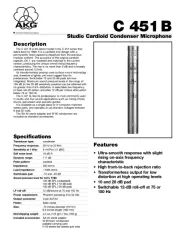
2 Augustus 2025
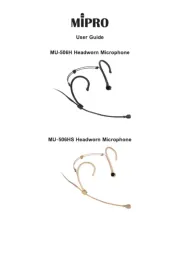
29 Juli 2025
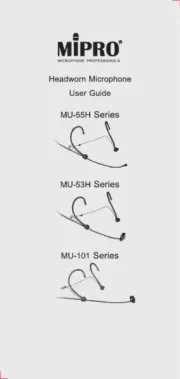
29 Juli 2025
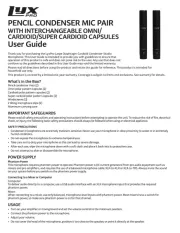
29 Juli 2025

29 Juli 2025
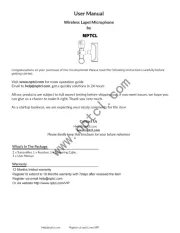
28 Juli 2025
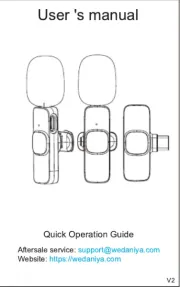
28 Juli 2025
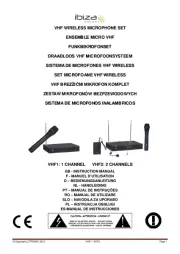
28 Juli 2025
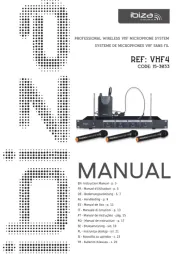
28 Juli 2025
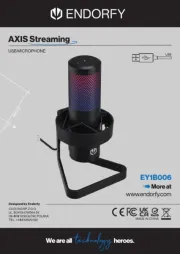
23 Juli 2025